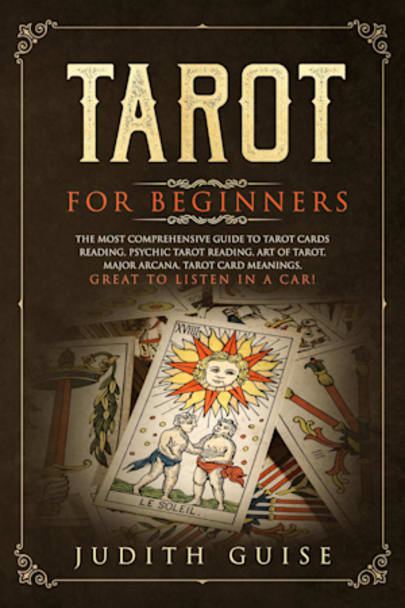The idea of tarot reading brings up a look at the mysterious, the unknown, and something that is almost mystical. What if you could read these cards and unlock some of this into your own life? Well, now you can! This guidebook is the ultimate tool for all beginners who want to be able to do their own tarot readings!This guidebook will have all of the information that you need in order to start … information that you need in order to start some of your own tarot readings today. Some of the topics that we are going to explore in this guidebook will include:
- A brief history of the tarot;
- Learning the art of the tarot, as well as what it all means;
- Some basics on how to read these tarot cards;
- The Major Arcana and some of the cards found inside;
- The Minor Arcana and some of the cards found in this part of the deck;
- Many of the spreads that a beginner needs to know in order to do their own readings;
- How to move beyond the deck and get the most out of the tarot readings;
- Ways to start doing readings for others; and
- The danger of the tarot, as well as why you need to make sure you are using it in the proper manner.
There is a lot of mystery that comes with the tarot cards, and the readings are something that a lot of people may not fully understand. However, there is a lot of great history and more behind the tarot cards, and learning how to read them and what to make out of all of it can really change things. When you are ready to learn how to read the tarot cards, either for yourself or for someone else, make sure to check out this guidebook to help you get started!
more



Poorly Written and Not Comprehensive
I am always a bit leery of any book claiming to be a “comprehensive guide” to anything. Few books can live up to that claim… and certainly, one that is only 124 pages in the PDF ARC copy I received could never be comprehensive on a topic as vast as the tarot. I have been a tarot enthusiast for decades, and unfortunately, I found this book very hard to read with little valuable information that couldn’t be found elsewhere… and written much better. The book comes across as if it was written by someone for whom English is not their native language, so it has lots of grammar, punctuation, spelling, and usage errors. A quick look at the online preview reveals that these have not been fixed in the published edition.
The author seems to be enamored with the present progressive tense (e.g., “is learning” or “are showing”). In an informational book like this, that tense is rarely appropriate and can make other sentences around it not using that tense awkward.
An example of the present progressive (and awkward) writing style near the start of the supposed history section: “Tarot is going to be a type of card game that is designed to tell fortunes and even reveal the future.” Hmmm, say what? Another present progressive example from the card meanings section (and by the way, all cards and spreads have sentences structured this way): “If this card is going to show up in reverse, it signifies that there is going to be a big shift and a new paradigm, but you are having trouble adjusting to this at all.” Describing the early history of the tarot: “To start, Tarot was a type of parlor game that was called Triumph, and it was played in a manner that is similar to how Bridge is played today. The game didn’t have any intention of divination at the time.” For one thing, the tarot didn’t start as a parlor game called Triumph; tarot cards existed a full century (plus!) before the game existed. And, ummm, inanimate objects or games cannot have intent!
So not only is this book not comprehensive in any sense, it is exceedingly poorly written as well. If you have an interest in the beginning book on the tarot, I suggest finding another one.
I received a free copy of this book, but that did not affect my review.
Quite interesting. I had no idea that tarot started out as a regular deck of playing cards in the 14th/15th century and that when the changes in the cards took place, it was from ancient cultures around the world. The cards started changing as Europeans became interested in divination. The deck started with the traditional 52 cards but has grown to 78, and there are now many types and sizes of card decks. Tarot has far more to do with intuition and learning to listen to your higher self than divination at this point in time. The book does a good job explaining the individual cards, what they mean and how to do a reading. It is fairly light on the history, but that does not detract from the book.
I received a free copy of this book via Booksprout and am voluntarily leaving a review.
This was a nice little guide for the beginning Tarot reader. Excellent explanations and lessons that were easy to follow.